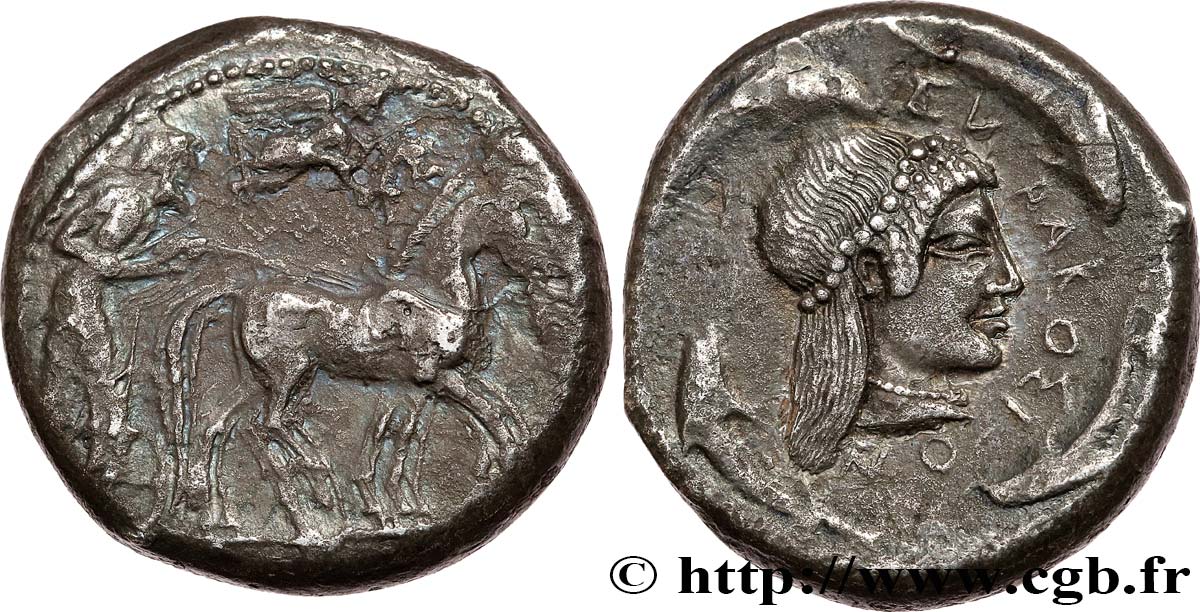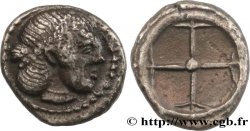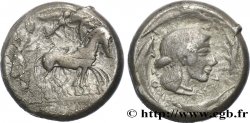bgr_705873 - SICILY - SYRACUSE Tétradrachme
1 500.00 €(Approx. 1560.00$ | 1245.00£)
Quantity
Add to your cart

Type : Tétradrachme
Date: c. 485-480 AC.
Mint name / Town : Syracusa
Metal : silver
Diameter : 24,5 mm
Orientation dies : 3 h.
Weight : 16,94 g.
Rarity : R2
Coments on the condition:
Monnaie centrée des deux côtés à l’usure régulière. Joli portrait d’Aréthuse. Patine grise avec de légers reflets bleutés
Catalogue references :
Obverse
Obverse legend : ANÉPIGRAPHE.
Obverse description : Bige au pas à droite, conduit par un aurige tenant les rênes et le kentron ; le bige est couronné par Niké volant à droite.
Reverse
Reverse legend : LÉGENDE AVEC LE N RÉTROGRADE.
Reverse description : Tête d'Aréthuse à droite, les cheveux relevés et retenus par un diadème de perles, entourée de quatre dauphins.
Reverse legend : SU-RAKOSI-ON








 Report a mistake
Report a mistake Print the page
Print the page Share my selection
Share my selection Ask a question
Ask a question Consign / sell
Consign / sell
 Full data
Full data









